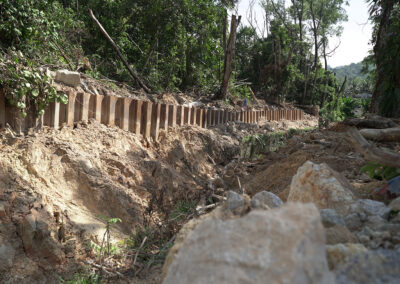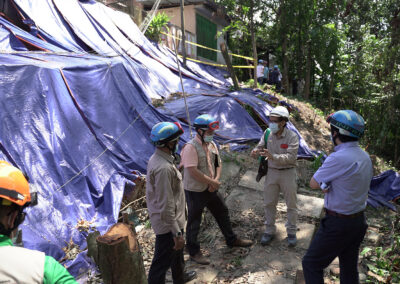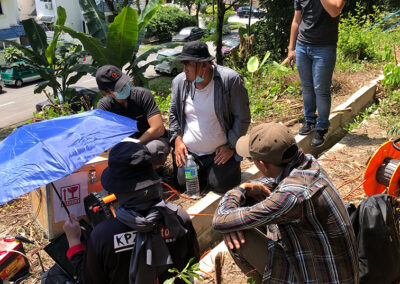Preventing Future Landslide Disaster Risk by Science, Technology, And Innovation in Selangor (Prevent-Landslide): A Special Study On Landslides In Bukit Antarabangsa, Selangor 2020-2021
On 30th May 2020, a landslide disaster struck Taman Kelab Ukay, Bukit Antarabangsa, and Mukim Hulu Kelang Gombak causing the residents of seven double-storey houses to be evacuated from their homes and affecting 75,000 populations in the vicinity. In the years 2007-2016, Malaysia is ranked 10th in terms of landslide frequency with 42,500 hotspots reported across the country in 2019. As a result, the Selangor State funded a special study on the landslides in Bukit Antarabangsa to address this issue.
This project is led by the Disaster Preparedness and Prevention Centre (DPPC), Malaysia-Japan International Institute of Technology (MJIIT) UTM, which aims at providing a better insight into preventing future landslide disaster risks by developing a series of key recommendations in policies strengthening and implementing scientific and technological based strategies. By identifying the elements-at-risk (ranging from buildings and infrastructure assets to communities and economies) that may be exposed to the landslide hazards in Bukit Antarabangsa area as well as assessing their vulnerability index, subsequent slope mitigation measures will be designed for the identified high-risk areas.
This project is also one of the great efforts by Selangor State to reduce emerging future disasters and strengthen urban resilience as outlined in the Sendai Framework for Disaster Risk Reduction 2015-2030 implemented by the United Nations Disaster Risk Reduction (UNDRR). This is a global initiative by the United Nations Development Programme (UNDP) to reduce fatalities, injuries, and economic damage from both natural and man-made hazards and achieve sustainable development.





